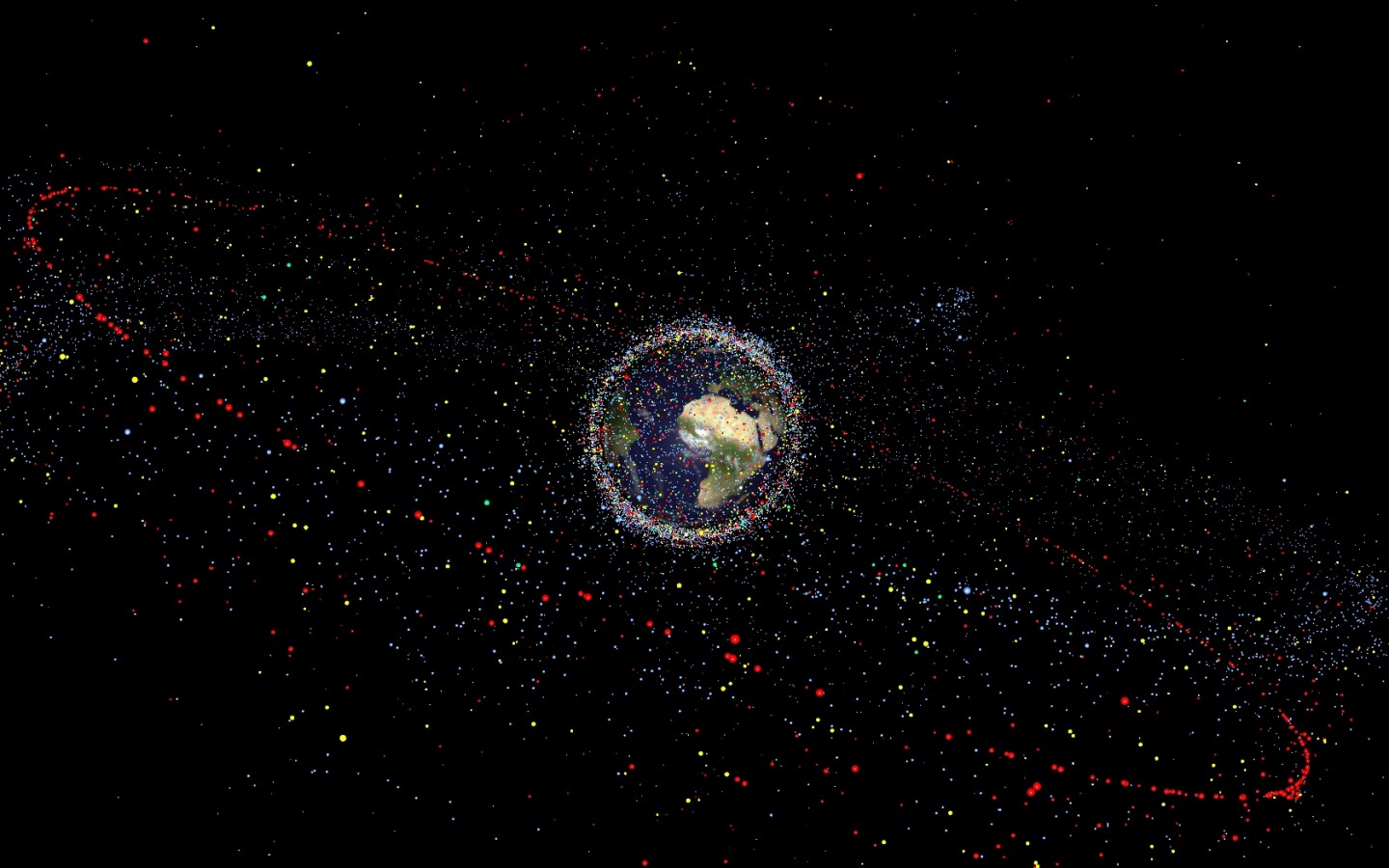With the film Gravity hoovering up awards for its portrayal of astronauts dodging colliding satellites, now seems a good time to talk about the very real threat posed by space debris. It’s small wonder, then, that ESA’s Clean Space initiative is looking at developing a satellite that can rendezvous with space debris and render it harmless by netting it like fish. The proposal is just one of the ideas to be discussed as part of a symposium this May focusing on the space agency's e.DeOrbit mission.
According to ESA, there are 17,000 trackable objects larger than a coffee cup orbiting the Earth and many more down to the size of paint chips. This may not seem like anything very dangerous, but at orbital velocity, even a paint chip can hit like a bullet and a steel nut has the impact of a hand grenade.
Furthermore, as the aftermath of the 2009 collision between the Iridium 33 and Kosmos 2251 satellites demonstrated, an encounter with a bit of space debris can turn a satellite into a cloud of shrapnel endangering other spacecraft. It wouldn't be a cascade of cinematic destruction as in Gravity, but the real-life damage would make space travel in the more crowded orbits more hazardous and expensive.
And it’s more than just collisions. ESA points out that while many pieces of space debris are defunct satellites, there are also the upper stages of launch vehicles. These satellites and rockets are not just collections of metal and circuitry. There are also tanks still containing propellants and batteries still carrying a partial charge. Any of these could explode under the right circumstances.

e.DeOrbit
Though still in its very early stages, the e.DeOrbit mission is aimed at clearing debris from one of the “sea lanes” of low-Earth orbit; the widely- raveled polar orbits at an altitude of 800 km (500 mi) to 1,000 km (625 mi). The e.DeOrbit satellite would weigh about 1,600 kg (3,500 lb) and fly into orbit atop one of ESA’s Vega rockets, but there’s still a lot of very basic design to be sorted out.Part of the problem is fairly straightforward. The e.DeOrbit has to be able to rendezvous with an object that’s in an unknown condition, inoperative, and probably tumbling. The spacecraft would have to be able to approach the object and assess the situation from a distance. This means that it needs a propulsion system, navigational systems, cameras, and the ability to keep station with great precision.
The tricky bit rears its head when it comes to actually doing something about the debris. That’s because it’s all a matter of tradeoffs. If there’s more than one way to skin a cat, and there’s also more than one way to snare a dead satellite. A robot arm that can reach out and grab a satellite seems an obvious method, but that means getting close to a tumbling object with the danger of the e.DeOrbit spinning out of control, too.
Another way is to fire harpoons and then reel the target in on a tether, but that means aiming, dealing with recoil, and the danger of creating more debris. Then, for the more science fiction minded, there’s the ion beam shepherd that uses a beam of charged particles to push the derelict craft, but that technology is still very immature.

According to an ESA report (PDF), the two most promising methods of capture are mechanical tentacles and nets. In the former, the satellite approaches the target and steadies itself against it using a robotic arm. Then a set of tentacles spread out and embrace the target while the arm keeps the e.DeOrbit satellite from bouncing against it. For the latter method using nets, the e.DeOrbit satellite shoots out a weighted net on the end of a tether. The net spreads as the weights fan out, then engulfs the target as the tether pulls tight.
This still seems pretty simple until you realize that grabbing the debris is only half the job done. The e.DeOrbit satellite must still despin the target and then it’s got to do something with it. That’s where the complexity comes in.
The questions facing ESA include basics, such as whether to use chemical rockets, an electric propulsion system, or a combination. How much will each of these cost? How will that affect the size of the satellite? Can ESA handle it on its own or will it mean partnering with another space agency?

Then there’s the question of what to do with the debris. One way to get rid of it would be to boost it into a higher orbit of 2,000 km (1,250 mi). The overall risks are less in doing this, but it still means the debris is in orbit and, worse, there are now two objects where there was only one before. The alternative is bringing it down below 600 km (375 mi) in altitude, so it burns up in the atmosphere, but this has a greater overall risk because the debris has to be aimed to burn up over an uninhabited strip of ocean to avoid danger to those on the ground.
How to answer these questions is part of the reason behind the e.Deorbit symposium to be held on May 6 in the Netherlands, where ESA and space industry representatives will pool their ideas.
Source: ESA








